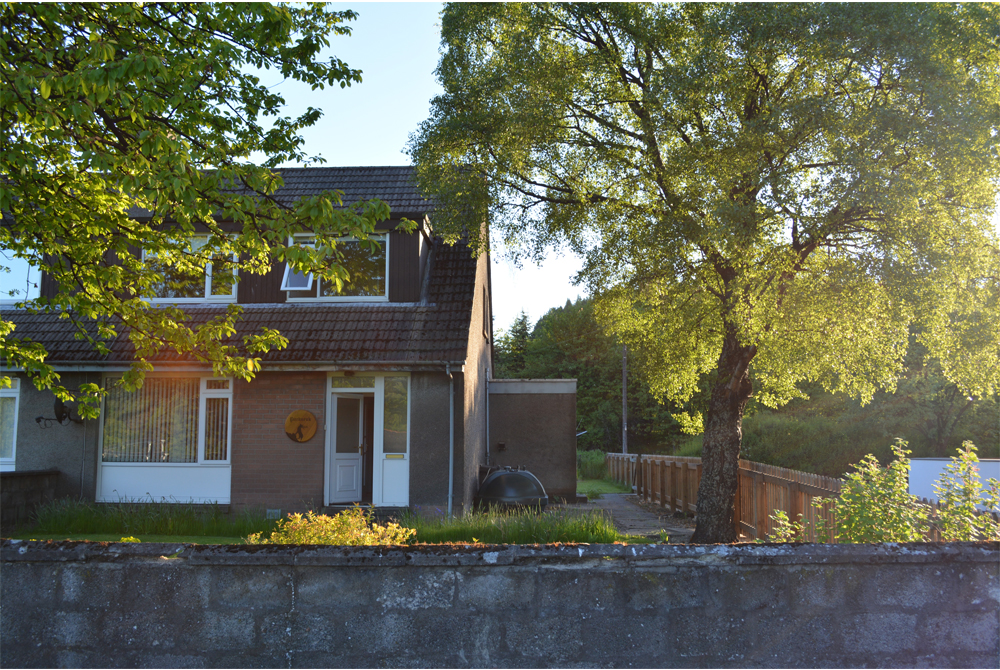I arrived in Dufftown, Scotland, at the beginning of June, one of eight artists participating in this year’s Glenfiddich artist residency. My plan was straightforward: build a working airplane in the kitchen, dining room, hallway and backyard of the house I would be occupying.
The airplane blueprints came from a 1981 issue of Popular Mechanics detailing a one-seat ultralight that could supposedly be built for $900 using readily available materials. Popular Mechanics projects always look easy on paper. Years ago, I built a compact little tube radio, taking note of the warning that I could be electrocuted while building or using it. I liked the slight whiff of danger and told myself that, if it were truly lethal, they wouldn’t have published the instructions in the first place. I figured it would be reckless for any magazine to make a tacit endorsement of something potentially deadly.
When I arrived at my new live-work space there were three sample bottles of Glenfiddich scotch waiting: “Glenfiddich” is Gaelic for “valley of the deer,” and, to my surprise, there is an actual valley here, filled with actual deer. Coming from Toronto, place names usually memorialize whatever was eradicated to make way for development.
During my first week, I caught the bus to the neighbouring city of Elgin to purchase a SIM card for my phone. I lost a frustrating couple of days trying to get email and Google Maps to work back in Dufftown, only to discover there is no mobile data in the area, at least through my provider. My mental map of Scotland now consists, in part, of open-Wi-Fi hotspots. Aberlour, the next town over the hill, doesn’t seem to get any sort of cellular service at all, which is probably why I’ve not seen anybody tapping a handheld device as they walk around. It looks strange to me, like some sort of time warp. I also walked past an eight-year-old paperboy doing his round during my first week—he greeted me warmly and politely while I tried to avoid making eye contact, as is my habit back home. Stores in the area include Marks and Spencers, Boots and W.H. Smith, businesses I remember fondly from my Toronto childhood, but have since vanished along with the courteous paperboys.
At least a week was lost trying to decipher my incoherent airplane blueprints.
The instructions are shockingly abbreviated. Nonchalant, even. I have seen more precise directions on the back of a frozen meal. There are incomplete material lists, confusing addenda and numerous measurements are missing or contradictory. My rudder could be either 53 3/4″ tall or 51″ tall, depending on which notation I choose to believe. This project is half guesswork. One certainty stands: I will need to lose 16 pounds before I can meet the weight requirements for flying this thing. It might be difficult, given the food here.
To construct my plane I had to repurchase tools I already own back in Toronto, as my North American tools run on 110 volts. (I wonder if they would have run twice as fast on the higher UK voltage, perhaps enabling me to get the job done quicker.) I plan to bring home my Scottish mitre saw, as I’ve never seen its kind in Canada; it transforms into an alarmingly rickety but serviceable table saw. When applying for my UK visa I happily paid the NHS surcharge, allowing me to visit an emergency room if the need ever arose. To get any sort of materials, tape, screws, glue, etc., I must take a one-hour bus ride to the nearest B&Q building-supply store in Elgin. It seemed crazy at first until I considered that the closest Canadian Tire to my Toronto apartment is also about an hour away by TTC. The scenery out the window is far, far nicer here.
Sourcing materials has been an exercise in translation. In terms of measurement units, imperial to metric specifications don’t always convert tidily, necessitating a judgement call between a heavier or flimsier substitute. Recommended brands (Elmer’s Glue, Styrofoam) are rarely available, forcing a process of trial and error to find a viable alternative. My aluminum airplane “cockpit” was supposed to be fabricated from 6061-T6 alloy aluminum (cheap and common in Canada, yet good enough to have been used by NASA on their Pioneer plaques). 6061 is unavailable in Scotland, and it was suggested I use 6082 alloy aluminium instead. I figure it must be “21 better,” so I went with it. Some things, however, were far easier to source. The 18′ lengths of Douglas fir I needed for the wings and fuselage were off the shelf from the whisky-vat maker up the street.
I have been very interested in this process of material adaptation, working with space and tool limitations, and subtly stretching the functionality of whatever is available.
The weather has been cool and rainy a great deal of the time. I am told it has been an unusually wet July this year, but my barber yesterday predicted August would be more suitable for working outside. I would like some clear skies for airplane building and flying, but I’m fine with the temperature. The one day last month it went up to 24° Celsius I overheard someone in the chip shop complaining about the crushing heat. Things feel different here.









